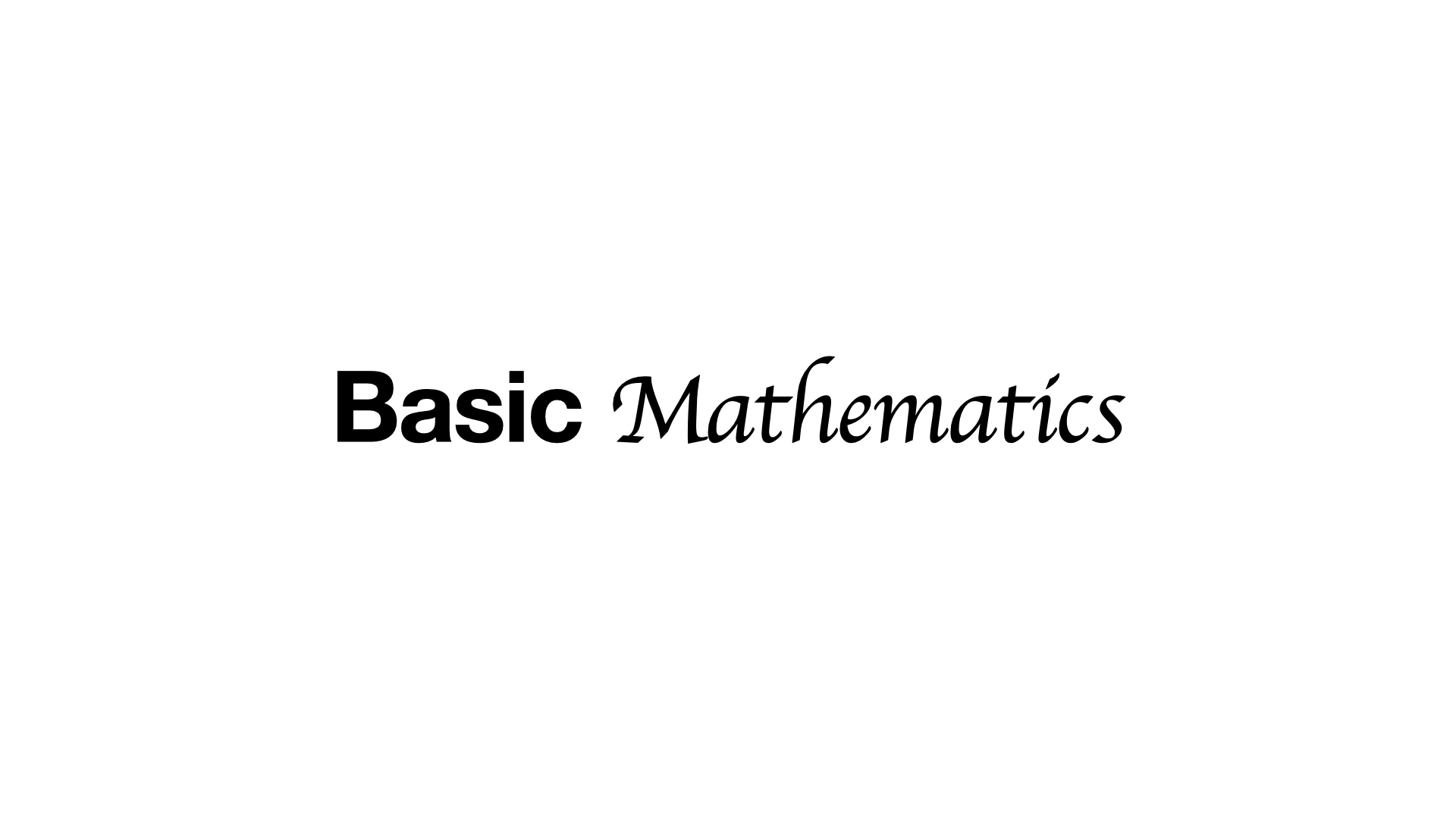Complex Number 复数
Algebra Form 代数表示
我们从原有的实数数轴上拓展出复数 \(z = a + bi\),其中 \(i = \sqrt{-1}\),\(a\) 为实部(Real Part),\(bi\) 为虚部(Imaginary Part)
对于任意复数我们有其在复平面上的坐标表示
Operation 运算
- 加减
\[ z_1 \pm z_2 = (a + bi) \pm (c + di) = (a \pm c) + (b \pm d)i \]
- 乘除 (\(i^{2} = -1\))
\[ z_1 \cdot z_2 = (a + bi) \cdot (c + di) = (ac - bd) + (bc + ad)i \]
通过共轭复数,将分母实数化,以得到 \(z = a + bi\) 的形式
\[ \frac{z_1}{z_2} = \frac{a + bi}{c + di} = \frac{(a + bi)(c - di)}{(c + di)(c - di)} = \frac{(ac + bd) + (bc - ad)i}{c^{2} + d^{2}} \]
Trigonometric Form 三角表示
若 \(z = a + bi\),通过三角函数,我们可以表示出
\[ x = \left\vert z \right\vert \cos \theta, \;\; y = \left\vert z \right\vert \sin \theta \]
我们定义 \(\left\vert z \right\vert = r\) 称之为 \(z\) 的模长(Modulus), \(\theta\) 是平面向量 \(\left< x, y \right>\) 的方向角,称为 \(z\) 的辐角(Argument)
于是我们有 \[ \begin{aligned} z &= a + bi \\ z &= r \cos \theta + r \sin \theta \cdot i \\ z &= r(\cos \theta + i \sin \theta ) \end{aligned} \]
Operation 运算
- 加减
\[ \begin{aligned} z_1 \pm z_2 &= r_1 \cos \theta_1 + r_1 \sin \theta_1 i \pm r_2 \cos \theta_2 + r_2 \sin \theta_2 i \\ &= (r_1 \cos \theta_1 \pm r_2 \cos \theta_2) + (r_1 \sin \theta_1 \pm r_2 \sin \theta_2) i \end{aligned} \]
- 乘除
\[ \begin{aligned} z_1z_2 &= r_1(\cos \theta_1 + i \sin \theta_1) \cdot r_2(\cos \theta_2 + i \sin \theta_2) \\ &= r_1 r_2 (\cos \theta_1 \cos \theta_2 + i \sin \theta_2 \cos \theta_1 + i \sin \theta_1 \cos \theta_2 - \sin \theta_1 \sin \theta_2) \\ &= r_1r_2[(\cos \theta_1 \cos \theta_2 - \sin \theta_1 \sin \theta_2) + i(\sin \theta_2 \cos \theta_1 + \sin \theta_1 \cos \theta_2)] \\ &= r_1r_2[\cos(\theta_1 + \theta_2) + i(\sin(\theta_1 + \theta_2))] \end{aligned} \]
(最后几步使用到了后面会通过欧拉恒等式证明的三角恒等式)
\[ \frac{z_1}{z_2} = r_1r_2[\cos(\theta_1 - \theta_2) + i(\sin(\theta_1 - \theta_2))] \]
所以我们会发现,代数表示加减运算更便捷,三角表示乘除运算更便捷
- 乘方与开方
棣莫弗公式(De Moivre’s Formula) \[ (\cos \theta + i \sin \theta)^{n} = \cos(n \theta) + i \sin(n \theta) \]
所以很自然我们有 \[ z^{n} = r^{n}(\cos (n \theta) + i \sin (n \theta)) \\ ~ \\ w = \cos \left( \frac{\theta + 2k \pi}{n} \right) + i \sin\left( \frac{\theta + 2k \pi}{n} \right), \quad k = 0, 1, \cdots , n - 1 \]
Complex Exponential Form 复指数表示
欧拉公式巧妙地联系了复指数表示和三角表示
\[ e^{i \pi} = \cos \theta + i \sin \theta \]
其本质思想可以理解为是将旋转 \(\theta\) ,和旋转多个拆分的 \(\mathrm{d} \theta\) 是相等的
若把 \(\theta\) 拆成 \(\frac{\theta}{n}\),当 \(n \to \infty\) 时,我们可以得到旋转复数
这个过程其实我觉得有更好的理解方法,但是我太 🥬 想不出来(
\[ \begin{aligned} z &= r\left(\cos \frac{\theta}{n}+ i \sin \frac{\theta}{n}\right) \quad \color{blue} \text{only rotate, so } r = 1 \\[1em] &= 1 - \frac{\left( \frac{\theta}{n} \right) ^{2}}{2} + i \frac{\theta}{n} \quad \color{blue} \text{apply approx, when } \frac{\theta}{n} \text{ is very small} \\[1em] &= 1 + i \frac{\theta}{n} \quad \color{blue} \frac{\left( \frac{\theta}{n} \right) ^{2}}{2} \text{ will be very small to be ignored} \end{aligned} \]
所以当 \(n \to \infty\),我们可以得到
\[ \lim\limits_{n \to \infty} \left( 1 + \frac{\theta}{n} i \right)^{n} = \cos(\theta) + \sin(\theta) i \]
依据 \(e\) 的定义 $_{n } ( 1 + )^{n} $,我们可以定义在复数域上的 \(e^{z}\)
\[ e^{z} = \lim\limits_{n \to \infty} \left( 1 + \frac{z}{n} \right)^{n} \]
然后代入
\[ \begin{aligned} \lim\limits_{n \to \infty} \left( 1 + \frac{\theta}{n} i \right)^{n} &= e^{i \theta} \\[0.8em] e^{i \pi} &= \cos \theta + i \sin \theta \end{aligned} \]
- 由此我们可以一种全新的视角打开三角函数恒等式
To be continued…
